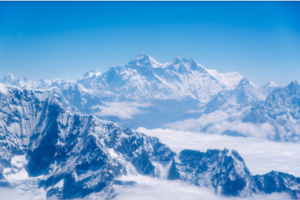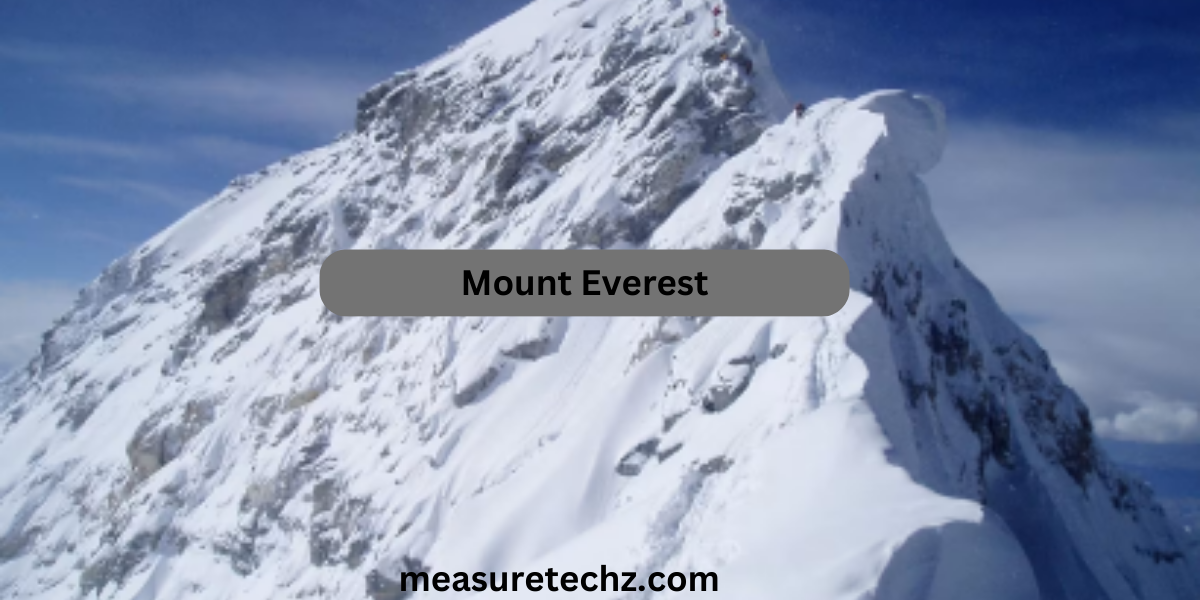Mount Everest, standing tall at 8,849 meters (29,032 feet), is the highest peak on Earth and a marvel of natural wonder. Situated in the Himalayan mountain range on the border between Nepal and Tibet, this iconic summit has captivated adventurers, scientists, and nature enthusiasts for centuries. But beyond its towering height lies a world teeming with history, challenges, and ecological significance. In this article, we delve deep into the fascinating world of Mount Everest, exploring its geology, cultural importance, climbing history, environmental concerns, and more. Whether you’re an aspiring mountaineer or simply curious, this comprehensive guide will leave you with a profound appreciation for the Earth’s highest peak.
The Geology and Formation of Mount Everest
How Was Mount Everest Formed?

Mount Everest’s story began around 60 million years ago, during the collision of the Indian and Eurasian tectonic plates. This massive geological event caused the land to buckle and uplift, giving birth to the Himalayan mountain range. Even today, Everest continues to rise approximately 4 millimeters each year due to ongoing tectonic activity.
Key Geological Features
- Rock Composition: Everest consists mainly of sedimentary and metamorphic rocks, including limestone, marble, and shale.
- The Summit’s Origins: The summit of Mount Everest is composed of marine limestone, evidence that this area was once beneath a prehistoric ocean.
- Climbing Mount Everest: A Tale of Triumph and Challenge
First Successful Ascent

In 1953, Sir Edmund Hillary of New Zealand and Tenzing Norgay, a Sherpa of Nepal, made history as the first climbers to successfully reach Everest’s summit. Their achievement marked a turning point in mountaineering and inspired countless adventurers worldwide.
Modern Climbing Expeditions
Today, climbing Mount Everest has become more accessible due to advanced gear, improved logistics, and professional guiding services. However, it remains a formidable challenge that demands physical fitness, mental resilience, and careful planning.
Key Facts About Climbing Mount Everest:
- Popular Routes: The two main routes are the Southeast Ridge (from Nepal) and the North Ridge (from Tibet).
- Climbing Seasons: The best time to climb is during pre-monsoon (April to May) and post-monsoon (September to October).
- Cost: An expedition can range from $30,000 to $100,000 or more, depending on the level of support and services.
- Risks: Altitude sickness, unpredictable weather, and avalanches are just some of the hazards climbers face.
Sherpas: The Unsung Heroes
Sherpas, an ethnic group native to the Himalayan region, play a critical role in Everest expeditions. Known for their exceptional climbing skills and adaptation to high altitudes, they carry supplies, set up camps, and guide climbers to safety. Their contribution to mountaineering cannot be overstated.
The Cultural and Spiritual Significance of Mount Everest
In Tibetan, Mount Everest is called “Chomolungma,” meaning “Goddess Mother of the World,” while in Nepali, it’s referred to as “Sagarmatha,” or “Forehead of the Sky.” For centuries, local communities have revered the mountain as sacred.
Ceremonial Practices
Before every expedition, climbers and Sherpas perform a “Puja” ceremony, seeking blessings from the mountain gods for a safe journey. This ritual underscores the deep spiritual connection between the mountain and those who live in its shadow.
Environmental and Ethical Concerns
The Impact of Tourism
While Everest’s popularity has brought economic benefits to the region, it has also led to significant environmental challenges:
- Trash and Waste: Decades of climbing have left behind tons of litter, including oxygen bottles, tents, and human waste.
- Ecosystem Disruption: Increased human activity has disturbed local wildlife and vegetation.
Solutions and Initiatives
- Clean-Up Expeditions: Governments and NGOs have launched clean-up campaigns to remove debris from the mountain.
- Permits and Regulations: Authorities now enforce stricter regulations, including limiting the number of climbers and mandating waste management protocols.
Everest in the Age of Technology
Virtual Climbing Experiences
For those who cannot physically climb Everest, technology offers virtual reality (VR) experiences that simulate the ascent. These tools provide an educational and immersive way to explore the mountain.
Scientific Research
Mount Everest has become a hub for scientific studies on climate change, glacial retreat, and high-altitude physiology. Researchers have installed weather stations at high altitudes to monitor environmental changes in real-time.
Tips for Aspiring Climbers
If you dream of summiting Mount Everest, preparation is key. Here are some essential tips:
- Train Thoroughly: Build stamina, strength, and altitude acclimatization through rigorous training.
- Choose the Right Team: Partner with reputable guiding companies for safety and support.
- Understand the Risks: Educate yourself about potential dangers and how to mitigate them.
- Respect the Environment: Follow Leave No Trace principles to minimize your ecological footprint.
Conclusion
Mount Everest is more than just the world’s tallest mountain it’s a symbol of human ambition, natural wonder, and cultural significance. From its geological origins to its role in modern exploration and environmental challenges, Everest represents the complexities and beauty of our planet. Whether you’re scaling its heights or admiring from afar, the mountain inspires awe and respect.
Are you ready to learn more about the incredible world of Mount Everest? Share your thoughts, experiences, or questions in the comments below, and let’s continue the conversation!

